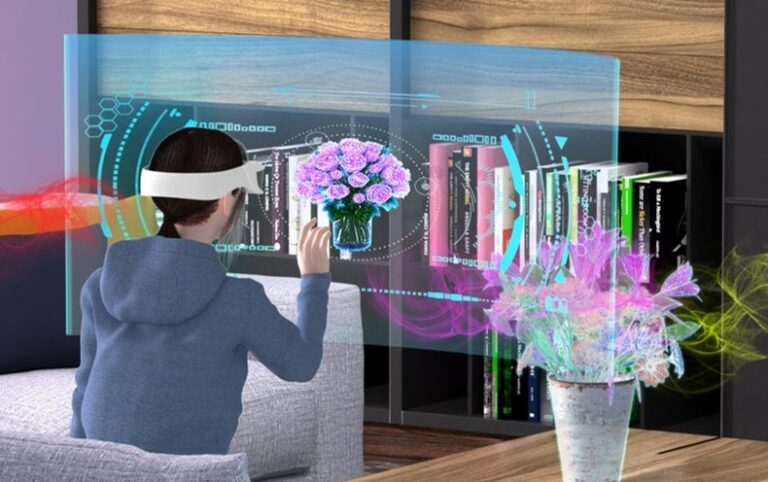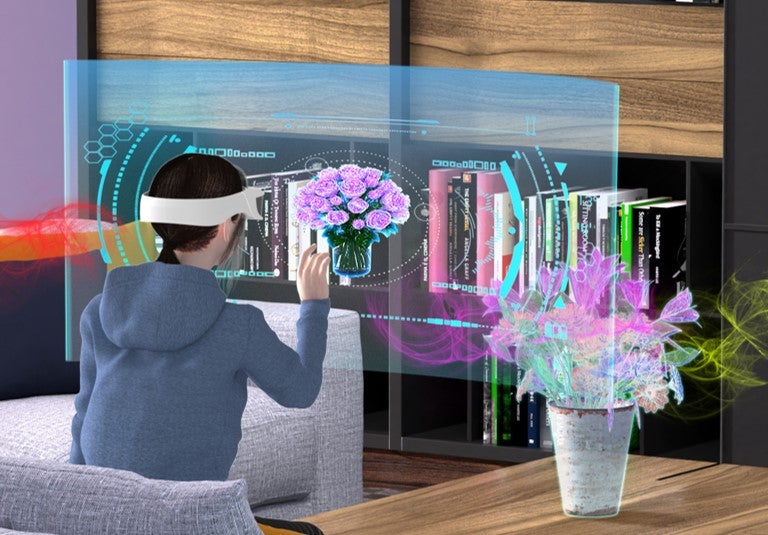
[ad_1]

Virtual reality is already widespread in entertainment and is starting to spread to fields ranging from education to health care. But while vision and hearing interfaces are extremely advanced, and touch, or “haptics,” is improving, one key sense has been missing from the virtual world: smell.
That may be about to change. Engineer Xinge Yu of the City University of Hong Kong and his colleagues have developed a lightweight, flexible and wireless olfactory interface that can precisely deliver smells such as lavender, pineapple or green tea to VR users and more fully immerse them in scented virtual worlds. “Bringing smell into VR expands it into another dimension,” Yu says. “We wanted to develop something in a wearable, skin-integrated format that people can go anywhere with and use anytime.”
The team’s design was described in a paper published on Tuesday in Nature Communications. A key advantage is that it can control odor intensity. One demonstration in the study involved increasing the intensity of the smell generated as a woman in a four-dimensional movie brought a rose up to her nose.
Previous smell interfaces have typically used bottles of liquid perfume, an atomizer (a device that turns liquids into a fine mist) and some method of blowing the atomized droplets out. This works, but it is rigid and has limited operating time between refills, and it does not easily allow for controlling intensity. These drawbacks have made the devices less practical for VR systems.
The new design uses small paraffin wax pads infused with scents that are heated by an electrode to release an odor. A temperature-dependent resistor, or thermistor, senses the temperature, which controls the smell’s intensity. And a magnetic induction coil controls a metal plate that conducts heat away from the electrode to rapidly cool it down and shut off the scent. Arrays of these odor generators, which are millimeters in size, are incorporated into thin, flexible sheets of electronics.
The study describes two different device formats. The first is small enough that it can be stuck to a user’s top lip, but it includes only two odor generators. The second is worn like a face mask and has nine. Both are customizable with a selection of 30 odors, including gardenia, caramel, ginger, clove, mojito and coconut milk. Different combinations can be blended at varying intensities to create a palette of thousands of possible fragrances.
The proximity to the user’s nose, together with clever engineering, allows for delays between activating and receiving a smell as short as 1.44 seconds. Atomizers are faster than this, but they lack the control of the new devices and are as small as they are ever going to get, says Judith Amores, a senior researcher at Microsoft Research and a research affiliate at the Massachusetts Institute of Technology, who studies olfactory interfaces for health applications but was not involved in the study. “An advantage of this system is they could miniaturize it even more,” she says. “That’s what’s exciting.”
The study includes demonstrations of possible applications beyond just augmenting VR, including communicating messages by smell and evoking emotions. The researchers suggest the devices could even be used to alleviate depressed mood or promote recall in people with age-related cognitive decline. “Scent is directly connected to the emotional and memory parts of the brain, so there are a lot of applications related to well-being and health,” Amores says. “It could also be used as a way to do olfactory training to help people who lost their sense of smell due to COVID.”
The researchers have already started shrinking things down further. They have a system that’s two to three times smaller now, and they aim to shrink it to something five to 10 times smaller in the future. “That’s the next step,” Yu says.
[ad_2]